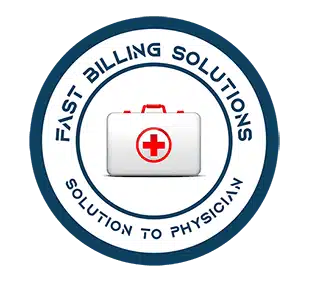
Chiropractic care has emerged as a cornerstone of holistic healthcare, focusing on natural approaches to alleviate pain and enhance overall well-being. Amidst the spine adjustments and patient care, the realm of chiropractic medical billing stands as a vital, yet often intricate, component. In this comprehensive exploration, Fast Billing Solutions delves into the intricacies of Chiropractic Medical Billing Services, shedding light on the unique challenges, key components, and the role of expert billing in sustaining chiropractic practices.
Understanding the Unique Challenges:
Specificity in Coding: Chiropractic procedures often demand a level of specificity in coding that distinguishes them from traditional medical billing services. Accurate coding for spinal adjustments, manipulations, and other chiropractic interventions is paramount. Fast Billing Solutions’ expertise lies in navigating the nuances of these codes, ensuring precision to prevent claim denials and optimize reimbursement.
Documentation Requirements: Chiropractic billing success hinges on meticulous documentation. From detailed patient histories to treatment plans and progress notes, comprehensive documentation supports accurate claims submission. Our specialized Chiropractic Medical Billing Services emphasize thorough documentation, aligning with insurance requirements and facilitating efficient claims processing.
Key Components in Chiropractic Medical Billing:
Evaluation and Management (E/M) Services: Chiropractors often provide evaluation and management services, necessitating proper documentation and coding. Accurate assessment of the complexity of each patient encounter ensures appropriate billing and reimbursement.
Diagnostic Imaging and Radiology Services: Chiropractic care may involve diagnostic imaging such as X-rays to assess musculoskeletal conditions. Effective management of billing for these services requires an understanding of coding, documentation, and insurance requirements.
Navigating Insurance Challenges:
Insurance Verification and Authorization: Ensuring patient eligibility and obtaining prior authorizations are integral steps in the Chiropractic Medical Billing process. Fast Billing Solutions meticulously verifies insurance coverage, reducing claim rejections and facilitating smooth reimbursement.
Claim Denials and Appeals: Chiropractors often encounter claim denials due to coding errors or insufficient documentation. Our team is adept at scrutinizing denied claims, facilitating comprehensive appeals to optimize reimbursement and reduce financial disruptions.
Fast Billing Solutions: Your Chiropractic Billing Partner:
Specialized Expertise: Fast Billing Solutions brings specialized expertise in Chiropractic Medical Billing Services, understanding the unique needs of chiropractors. Our team ensures accurate coding, meticulous documentation, and adherence to insurance regulations.
Get Free Demo of your Practice Today!Efficiency through Technology: Our integration of advanced billing technology streamlines processes, enhancing efficiency in claims submission, payment posting, and follow-up. Chiropractors can focus on patient care, confident that their billing needs are managed with precision.
Conclusion: Elevating Chiropractic Practices Through Expert Billing:
Chiropractic Medical Billing Services serve as the backbone of financial health for chiropractic practices. Fast Billing Solutions is committed to alleviating the billing complexities faced by chiropractors, offering tailored solutions that optimize revenue, minimize denials, and foster the growth of chiropractic practices.

Most Frequently Asked Question about Chiropractic Medical Billing – FAQs
- What codes can a chiropractor bill? Chiropractors typically use Current Procedural Terminology (CPT) codes. Common codes include 98940 (Chiropractic Manipulative Treatment), 98941 (Chiropractic Manipulative Treatment), and 98943 (Extraspinal Manipulative Treatment).
- Can a chiropractor bill 99213? Chiropractors usually bill for manipulative treatment codes (98940-98943) rather than Evaluation and Management (E/M) codes like 99213. E/M codes are often associated with medical doctors and primary care providers.
- Does ChiroTouch have a billing service? ChiroTouch primarily offers practice management software for chiropractors. While it includes billing features, it may not provide comprehensive medical billing services. Fast Billing Solutions provides comprehensive chiropractic medical billing services.
- What is CPT code 98943 for chiropractic? CPT code 98943 is used for extraspinal chiropractic manipulative treatment. It involves manipulative treatment provided to areas other than the spine, such as the extremities.
- What is the difference between 98940 and 98941? The main difference lies in the number of regions manipulated. CPT code 98940 is for spinal manipulative treatment of one to two regions, while 98941 is for three to four regions.
- What is the difference between 98941 and 98943? CPT code 98941 is for spinal manipulative treatment of three to four regions, while 98943 is for extraspinal manipulative treatment.
- How to code chiropractic services? Chiropractic services are coded using CPT codes, primarily in the range of 98940-98943 for spinal manipulative treatment and 98943 for extraspinal manipulative treatment.
- Can chiropractors bill physical therapy codes? Chiropractors may bill for certain physical therapy-like services, but they generally don’t use traditional physical therapy codes. Instead, they use manipulative treatment codes within the CPT range.
- What is the 51 modifier for chiropractic? The 51 modifier is used to indicate multiple procedures during the same session. In chiropractic billing, it might be used when multiple spinal regions are manipulated during one visit.
- Do chiropractor visits count as medical expenses? Chiropractor visits are generally eligible medical expenses if they are for medical care. However, it’s essential to check tax regulations and consult a tax professional for specific details.
- Can a chiropractor bill 99204? Chiropractors usually don’t bill E/M codes like 99204, as these are more aligned with medical doctors’ billing for comprehensive patient assessments.
- What is the modifier 25 for chiropractors? Modifier 25 is used to indicate a significant, separately identifiable evaluation and management service by the same physician on the same day as another procedure or service, such as a chiropractic manipulative treatment.
- What is pay as you go billing? Pay-as-you-go billing is a flexible payment model where customers are charged based on their actual usage of a service, product, or utility, rather than a fixed or upfront cost.
- What are the disadvantages of pay-as-you-go? Disadvantages of pay-as-you-go billing can include potentially higher per-unit costs, uncertainty in overall expenses, and the need for vigilant monitoring of usage to avoid unexpected charges.
- Does anyone still use pay-as-you-go? Yes, many industries, especially in telecommunications and cloud services, still utilize pay-as-you-go models due to their flexibility and cost-effectiveness.
- What is pay monthly vs pay-as-you-go? Pay monthly involves fixed monthly payments, while pay-as-you-go involves paying for actual usage. The choice depends on the user’s preferences and usage patterns.
